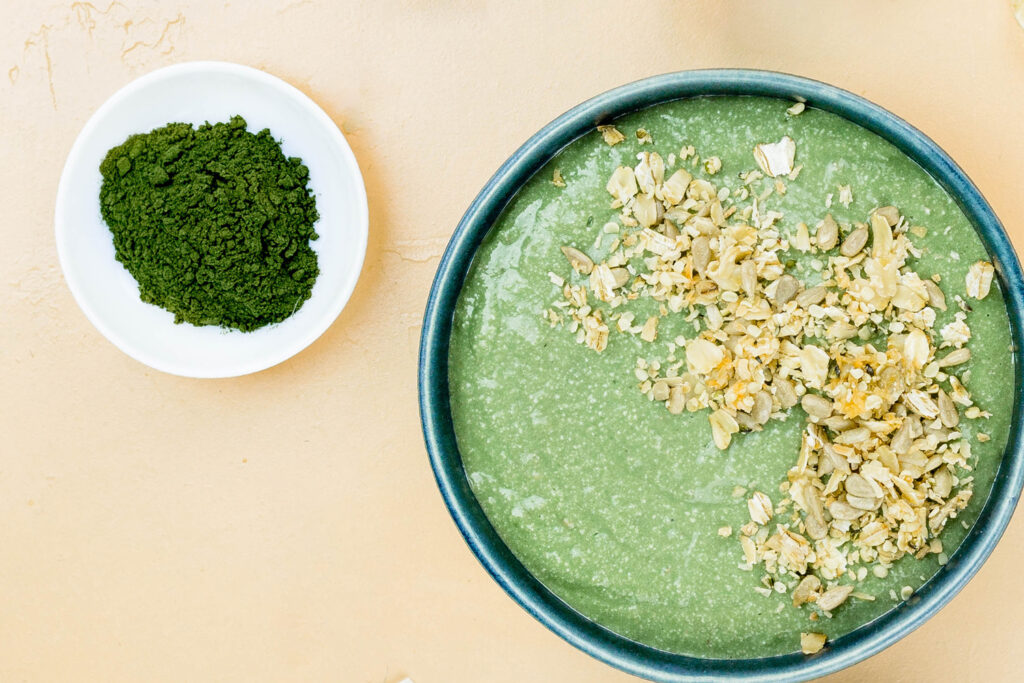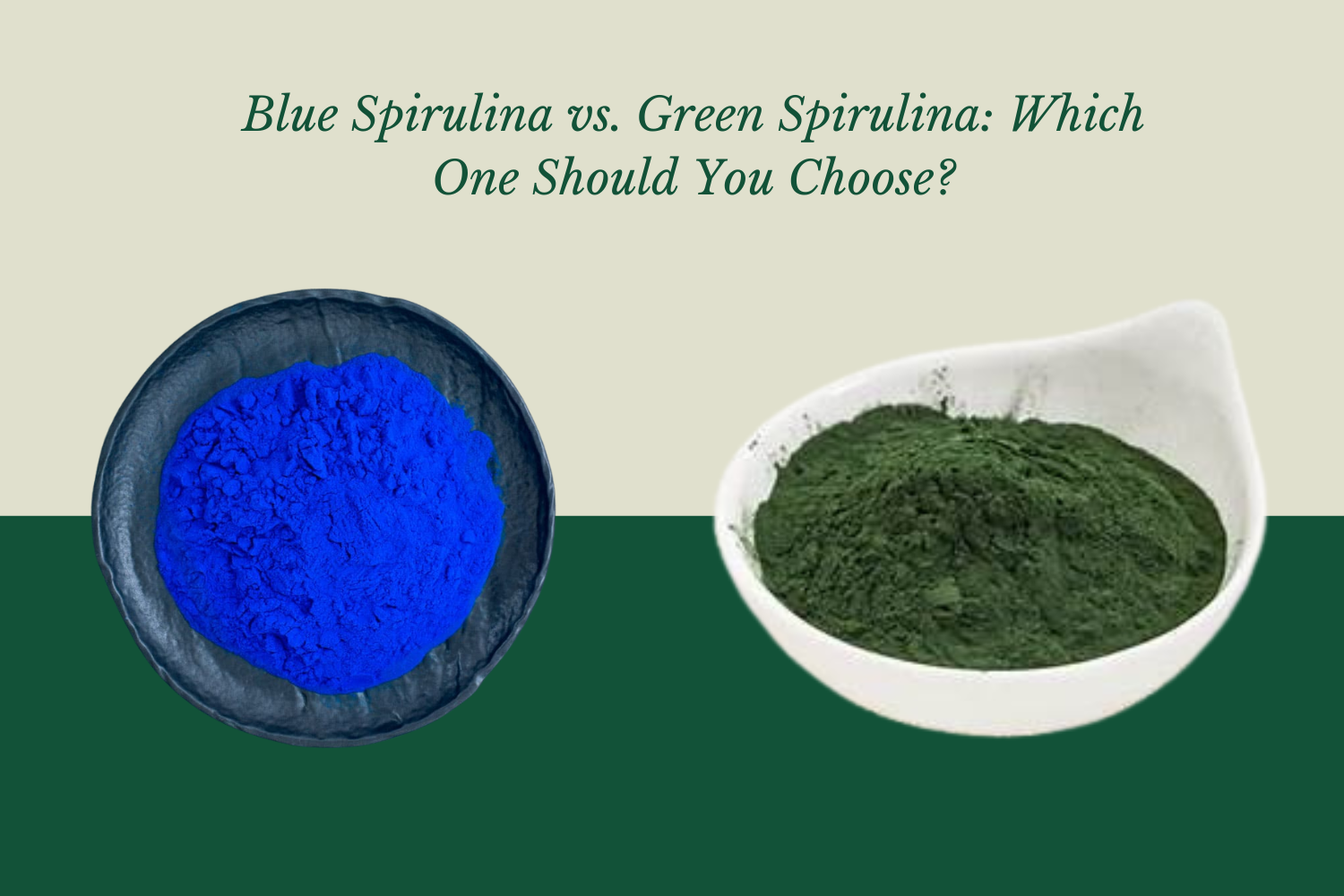Both blue spirulina and green spirulina come from the same type of algae but offer different health benefits due to their unique components. Blue spirulina is mainly known for its vibrant blue color, which comes from a pigment called phycocyanin, while green spirulina contains a mix of chlorophyll and phycocyanin, giving it a blue-green hue. But which one is better for you? Let’s break it down.
What Is The Difference Between Blue and Green Spirulina?
Blue Spirulina: Blue spirulina is extracted from the phycocyanin pigment found in spirulina. This pigment has powerful antioxidant and anti-inflammatory properties that help protect the body from harmful free radicals. Blue spirulina has a vibrant blue color and a milder taste, making it a popular choice for smoothies and food coloring.
Green Spirulina: Green spirulina, also called blue-green algae, contains both chlorophyll (the green pigment) and phycocyanin. This full-spectrum spirulina is packed with nutrients such as vitamins, minerals, and protein. It’s known for supporting energy levels, immune function, and detoxification. Green spirulina has a more intense, earthy flavor than blue spirulina.
Health Benefits Of Green Spirulina
- Rich in Nutrients: Green spirulina is loaded with essential vitamins like B12 and minerals like iron and magnesium, making it a great addition to any diet, especially for vegetarians.
- Supports Immunity: It boosts the body’s immune system and helps fight infections.
- Detoxifies: The chlorophyll in green spirulina helps cleanse the body by binding to toxins and removing them.
- Energy Boost: The high-quality protein and nutrients help improve energy and overall vitality.

Health Benefits of Blue Spirulina
- Antioxidant Power: Phycocyanin in blue spirulina fights free radicals and reduces oxidative stress, which is great for overall health.
- Anti-Inflammatory: It helps reduce inflammation in the body, which can be beneficial for conditions like arthritis.
- Brain Health: Blue spirulina may support cognitive function and protect the brain from damage.
- Natural Food Color: Beyond health benefits, blue spirulina is often used as a natural food coloring for smoothies, desserts, and drinks.
Which One Should You Choose?
It ultimately depends on what you’re looking for. If you want a spirulina that’s rich in a full spectrum of nutrients, green spirulina might be the better option. It’s perfect for supporting your overall health, immunity, and energy. However, if you’re mainly looking for antioxidant and anti-inflammatory benefits, or if you prefer a milder taste, blue spirulina could be the right choice for you.
Both types of spirulina can be easily added to smoothies, juices, or even baked goods, and both offer impressive health benefits. Just make sure to choose high-quality spirulina for the best results!
FAQ
What is the main difference between blue and green spirulina?
- Blue spirulina contains only phycocyanin, while green spirulina has both phycocyanin and chlorophyll.
Which spirulina is better for energy?
- Green spirulina is better for boosting energy because of its high nutrient content.
Is blue spirulina good for antioxidants?
- Yes, blue spirulina is packed with antioxidants, especially phycocyanin.
Which spirulina tastes better?
- Blue spirulina generally has a milder taste compared to the more earthy flavor of green spirulina.
Which spirulina is better for detox?
- Green spirulina is better for detoxing due to its chlorophyll content.
Which spirulina helps with inflammation?
- Both blue and green spirulina help with inflammation, but blue spirulina is especially known for its anti-inflammatory properties.
Can I use blue spirulina for coloring food?
- Yes, blue spirulina is often used as a natural food coloring due to its vibrant blue color.
Bottom Line
Blue spirulina and green spirulina each have their unique advantages. Green spirulina offers a wide range of nutrients and is perfect for those looking to support overall health, while blue spirulina is packed with antioxidants and is often used for its vibrant color. Choose the one that best aligns with your personal health goals and taste preferences!

